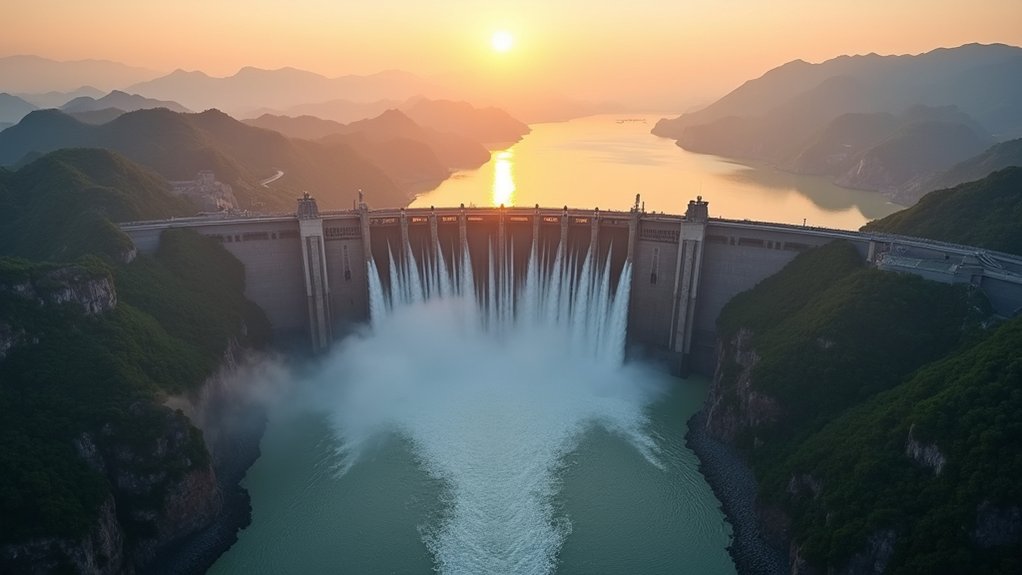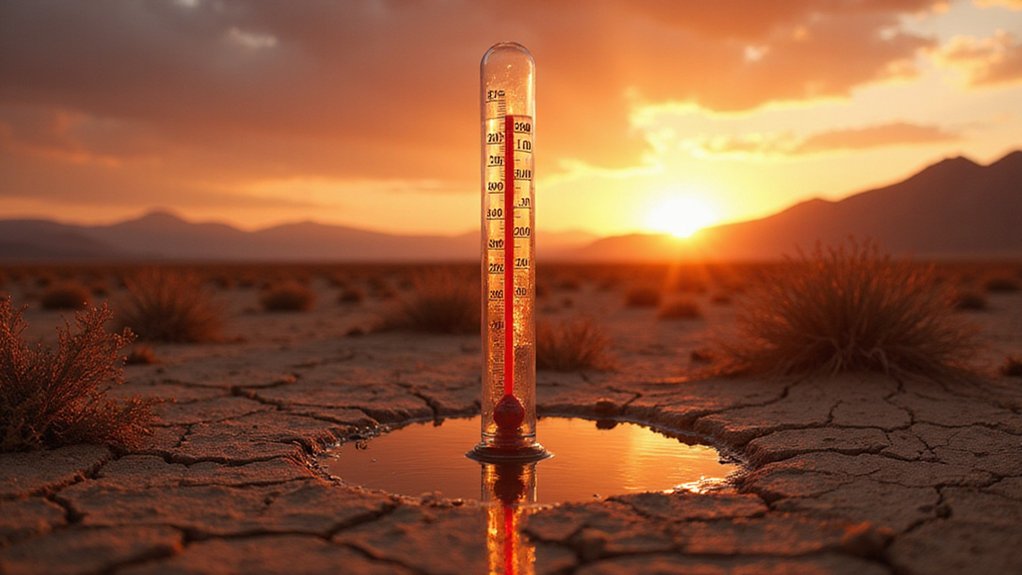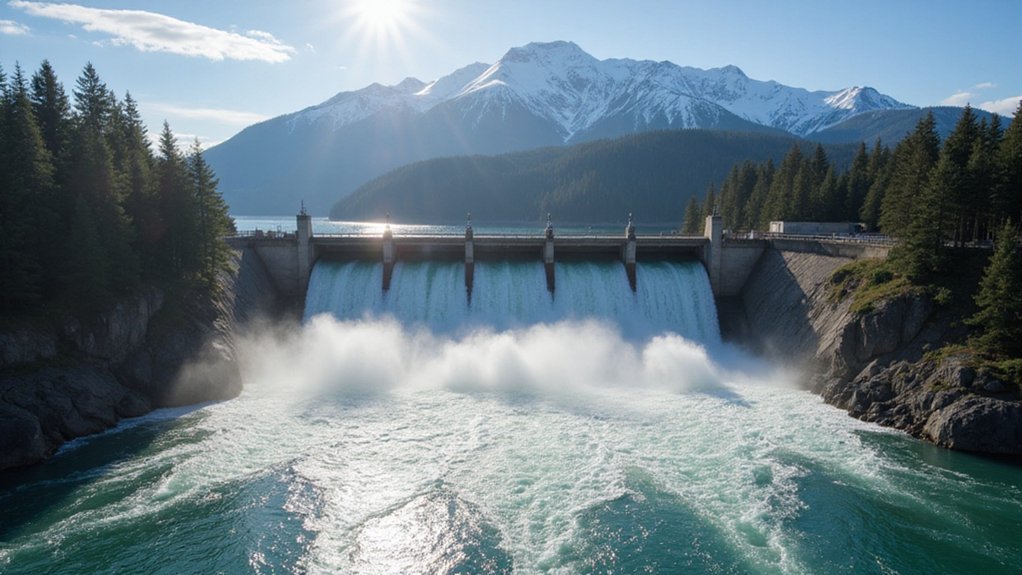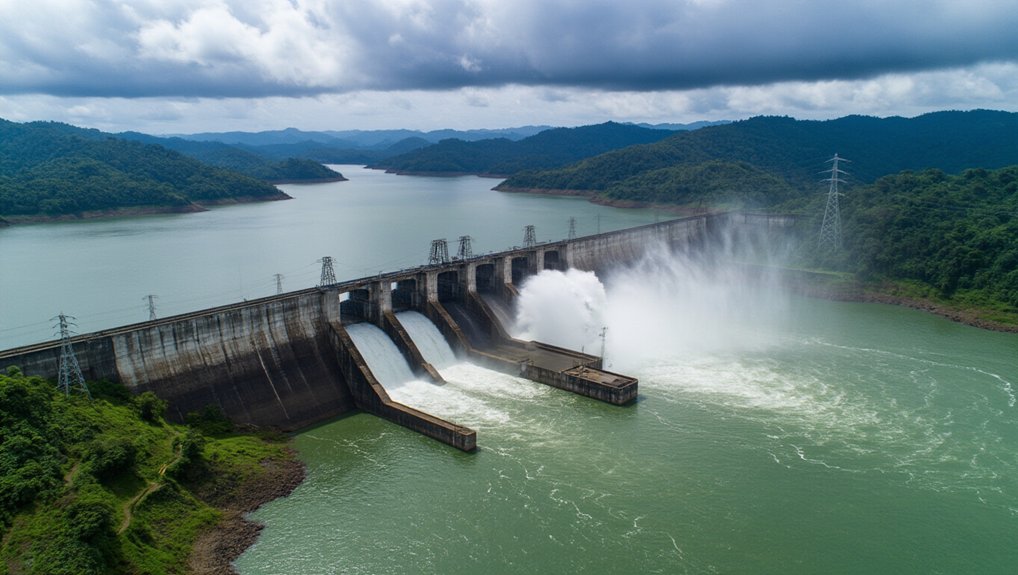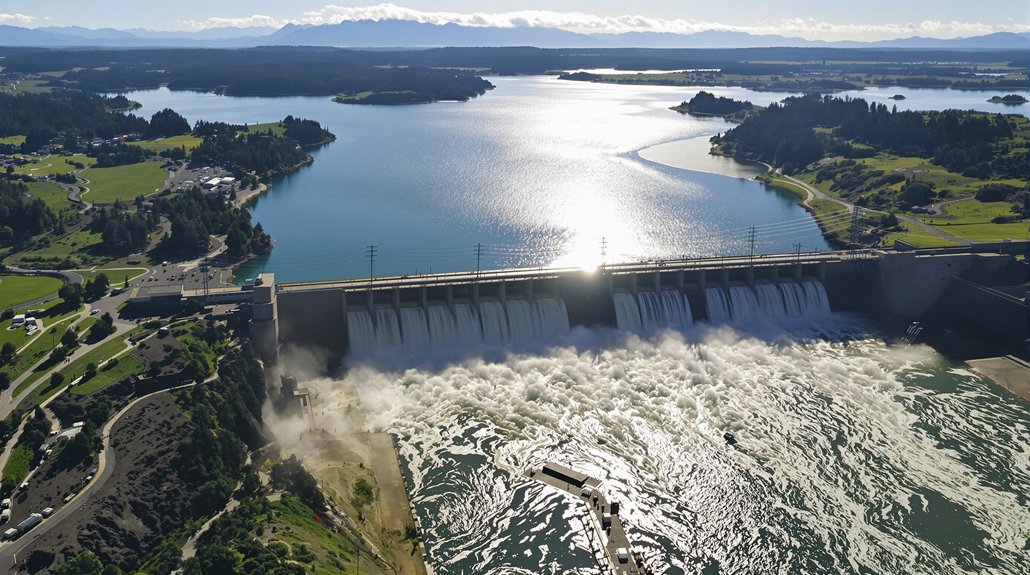China’s Three Gorges Dam makes nuclear power plants look like battery-operated toys. This massive concrete beast on the Yangtze River pumps out 22,500 megawatts of raw power. That’s almost four times what China’s biggest nuclear station can manage. The largest Chinese nuclear facility, Yangjiang, tops out at a measly 6,000 MW. Do the math.
Three Gorges Dam crushes nuclear power with 22,500 megawatts of pure hydroelectric muscle.
The numbers are almost comical. Three Gorges generated 103.1 terawatt-hours of electricity in 2021. That’s a world record, by the way. Yangjiang? It managed 49.2 TWh that same year. Not even close. When this hydropower monster runs at full throttle, it can push 18 gigawatts straight into the grid. That’s enough juice to keep dozens of major cities humming along without breaking a sweat.
Here’s the kicker: no uranium required. While nuclear plants mess around with radioactive fuel and waste that nobody wants, Three Gorges runs on water. Just water. The Yangtze flows, turbines spin, electricity happens. Simple. Clean. No glowing green stuff to worry about for the next thousand years. The dam saves China from burning enough coal to pump 100 million tonnes of carbon into the atmosphere annually. This aligns with China’s ambitious goal of reaching 33% renewable capacity by 2025. Meanwhile, China’s nuclear sector aims to hit 200 GWe by 2030, but even that ambitious target pales next to what this single dam already delivers.
The engineering scale is borderline ridiculous. More concrete went into this project than any other structure on Earth. The reservoir stretches over 600 kilometers, basically turning a chunk of the Yangtze into a massive bathtub. Yangjiang’s six CPR-1000 reactors sit on the Guangdong coast, representing China’s push for domestic nuclear technology, but they’re dwarfed by this inland water giant.
Price tag? North of $30 billion. That makes it one of the priciest infrastructure projects humans have ever attempted.
But nothing’s free. Over a million people had to pack up and move when the reservoir filled. Fish can’t figure out how to migrate anymore. Sediment patterns are all screwed up. The ecosystem took a hit, no sugarcoating it.
Still, the dam does more than generate power. It prevents floods that used to kill thousands. It provides blackstart capability when the grid crashes. It offers flexible peaking capacity that nuclear plants can only dream about. China wanted energy security without depending on imported fuel. Mission accomplished.
References
- https://world-nuclear.org/information-library/country-profiles/countries-a-f/china-nuclear-power
- https://en.wikipedia.org/wiki/Yangjiang_Nuclear_Power_Station
- https://www.sterlingtt.com/2022/03/01/biggest-power-plants-world/
- https://pris.iaea.org/pris/CountryStatistics/ReactorDetails.aspx?current=933
- https://globalenergymonitor.org/wp-content/uploads/2024/08/GEM-China-Nuclear-brief-August2024.pdf
